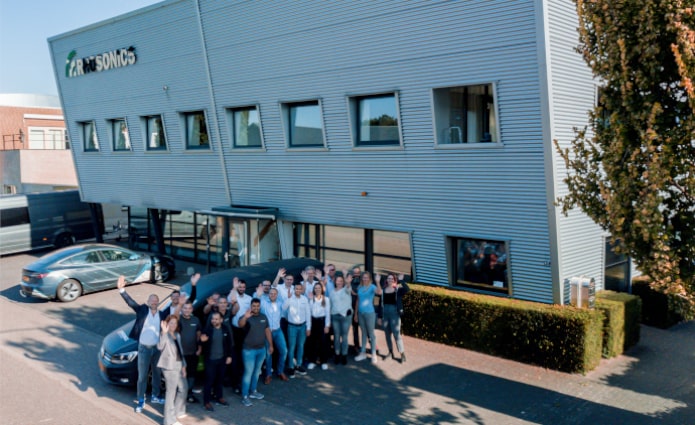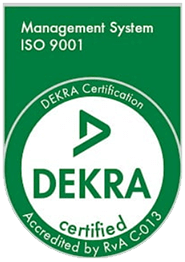Process control in the grinding circuit
Friday 11 Aug 2023
Mineral processing plants have embraced advanced systems to efficiently manage their operations. A crucial component of these systems is instrumentation, which aids in enabling real-time data pertaining to various processes. The gathered data is then utilized within control loops, allowing for precise control over operations.
The information obtained from these instruments serves for process control purposes, such as regulating valves, pumps, and managing the addition of dilution water to slurries. In this blog post, we will explore the primary control variables typically encountered in the grinding circuit.
First, we will shortly discuss how a typical processing plant manages data for process control purposes, with the Maria Dama plant in Colombia as an exemplary case study.
Process control at Maria Dama
Maria Dama has adopted the SCADA control system, a powerful Data Acquisition and Monitoring System. SCADA plays a crucial role in collecting variables and data from field devices, which are then transmitted to servers and transformed into valuable process information.
This real-time information is conveniently displayed on monitors within the control room at the site, enabling operators to promptly respond to operational requirements.
One of the key operations monitored is the grinding circuit, where crucial metrics such as the hourly output of processed ore can be easily tracked. In the ore separation stage, parameters like density, flowrate, particle size and pressure are typically under constant surveillance to ensure performance measures.
The information received enables operators to swiftly analyze process behavior, enabling faster decision-making and analysis of the process behavior in order to achieve high performance and efficiency of the plant.
Some benefits of advanced process controls
(I) Total control of the plant through monitoring
There are many benefits to controlling various parameters, such as particle size and slurry density to achieve an efficient classification process in a cyclone. The cyclone utilizes centrifugal force to separate slurry particles based on their size, shape, and specific gravity.
Coarser particles settle faster and move to the wall of the cyclone, while finer particles move towards the zone of low pressure and are then pushed upward.
Maintaining a certain slurry density is crucial for optimal particle classification. The cyclone is highly effective for fine separation sizes but less efficient for middle-size particles.
Excessive water in the process leads to the production of more middle-size particles, which escape the grinding circuit through the cyclone overflow, decreasing the grinding mill’s efficiency and allowing unwanted particle sizes to enter the subsequent process stages.
(II) Optimal particle classification
To achieve optimal particle classification, real-time changes in the cyclone feed need to be monitored. Controlling the percentage of solids in the feed flow using a density meter is a key aspect of achieving optimal cyclone control. Additionally, density meters are also used to monitor the cyclone’s overflow and underflow, along with pressure and particle size.
Excessive solids content can overload the grinding circuit, resulting in poor grinding performance. Therefore, the slurry density should be maintained within the specified targets and parameters initially set by the process personnel.
Water can be added to the process to dilute the slurry and control its density, thereby reducing the number of middle-sized particles and preventing poor grinding caused by solids overload.
Continuous real-time measurement is essential in the grinding circuit to ensure that the density remains within optimal conditions.
(III) Enhanced problem solving
Implementing advanced controls provides greater stability to the grinding circuit by actively managing disturbances and maintaining desired operating conditions. This stability translates into reduced downtime, fewer process upsets, and improved overall reliability.
When the cyclone returns ore to the ball mill, both the total volume of ore and the slurry density increase in the grinding circuit. This recycled ore is referred to as the circulating load. If the grinding process becomes less efficient, the circulating load will continue to rise until it exceeds the circuit’s handling capacity.
A density meter can be applied as a warning system in the grinding circuit. Real-time density measurement enables detecting the increase in circulating load, allowing for process control before issues become unmanageable. Particle size acts as an important indicator of grinding circuit performance and is typically measured by online particle size analyzers (PSA).
However, the unavailability of PSA measurements can disrupt the control loop. To address this problem, a self-correcting particle size predictor was developed in an automation project at a grinding circuit in South Africa.
This predictor calculated the predicted particle size value based on the slurry feed density, volumetric flow rate, and pressure drop over the cyclone. The predicted value was updated every five minutes. Even when the PSA value was temporarily lost, the predicted value remained in close agreement with the actual value when it returned.
Overall, the benefits of advanced process controls in the grinding circuit include improved efficiency, enhanced product quality, increased throughput, reduced variability, operational stability, optimal resource utilization, and real-time monitoring and diagnosis.
These advantages contribute to overall process optimization and economic benefits for mining and processing operations.
For more information about Rhosonics, please take a look at our LinkedIn, Instagram or Twitter page. For questions, you can contact us directly or take a look at this page to get in touch with your local distributor.
Receive our technical update?
Fill in your name and email address and we’ll keep you in the loop on our latest technology updates.



